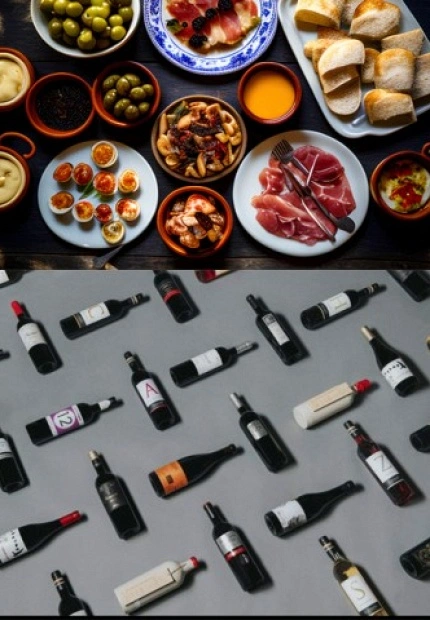How to choose a wine for a dinner.
Choosing the Perfect Wine for Dinner: An Art that Complements the Flavors
Choosing the right wine for dinner can transform a simple meal into an exceptional dining experience. From rich reds to refreshing whites, the wide variety of wines available offers an exciting opportunity to enhance food flavors and satisfy personal tastes. Here we explore some key aspects to consider when choosing the perfect wine for dinner.
1. Pair with the Main Course:
The fundamental rule when choosing a wine is to pair it with the main dish. Red meats usually go well with robust red wines, such as a long-aged TORO wine, while fish and poultry dishes can be harmonized with lighter white wines, such as a Malvasía or Verdejo. If dinner includes a milder dish, such as pasta or roast chicken, a medium-bodied red wine, such as a young red from Ribera del Duero, Rioja or even a fruity wine from Toro, can be a balanced choice.
2. Consider Flavors and Sauces:
It is not only important to pair the wine with the type of meat, but also with the flavors and sauces present in the dish. For example, a white wine with hints of citrus can enhance the freshness of a lemon sauce on fish, while a red wine with notes of red fruits can complement a tomato sauce on a pasta.
3. Taking into account the Season:
The season of the year can also influence the choice of wine. In the warmer months, you may prefer white wines or lighter red wines, such as a Grenache or Juan García. On the other hand, during the colder months, more robust red wines, such as a Pre-Phylloxeric Tinta de Toro or an old Mencía, can be more comforting.
4. Adapt to Personal Palate:
Each person has unique taste preferences, and choosing a wine that suits one's own palate is essential. Some may enjoy dry wines and strong tannins, while others prefer sweeter, softer options. Exploring different varieties and styles will allow you to find the perfect balance that meets individual preferences.
5. Compatibility with Accompaniments:
In addition to the main course, accompaniments should also be considered when selecting wine. A wine that harmonizes with both the meat and the accompaniments will ensure a cohesive tasting experience. For example, a dry white wine can complement a fresh salad well, while a structured red can enhance the richness of mashed potatoes or more substantial side dishes.
6. Explore the Diversity of Varieties:
Not limiting yourself to a single grape variety opens up a world of possibilities. The diversity of strains, wine regions and winemaking methods provides a wide palette of flavors and styles. Experimenting with different wines will allow you to discover new preferences and expand your appreciation of the wine world.
7. Balance between Acidity and Fat:
The balance between the acidity of the wine and the fat of the food is crucial. Fattier dishes, such as roast meats or creamy cheeses, complement well with wines that have more pronounced acidity to cut through the fat and cleanse the palate. Fresh white wines or red wines with a good acid structure are wise choices in these cases.
8. Consult with Experts or Labels:
It's always helpful to ask wine experts or sommeliers for advice, especially if you're not sure which wine pairs best with your dinner. Additionally, reading the descriptions on bottle labels can provide valuable information about the characteristics of the wine and the pairing recommendations suggested by the producers.
Conclusion: A Complete Sensory Experience
Choosing the right wine for dinner is not just a matter of pairing, but an opportunity to create a complete sensory experience. The harmony between wine and food enhances the flavors and adds an additional layer of enjoyment to the table. By considering the main course, flavors, season, and personal preferences, you can select a wine that elevates the dining experience and creates lasting memories at every culinary encounter.
The choice of wine thus becomes an art that enriches the dinner and contributes to the satisfaction of the senses.

